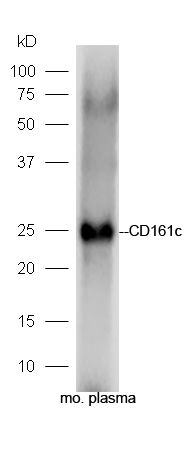-
Product Name
Anti-Klrb1c antibody
- Documents
-
Description
Rabbit polyclonal antibody to Klrb1c
-
Tested applications
WB
-
Species reactivity
Human, Mouse, Rat
-
Alternative names
Nk antibody; Ly5 antibody; NK- antibody; NKR antibody; Nk1 antibody; Ly-5 antibody; Ly55 antibody; Ly59 antibody; NKR- antibody; Nk-1 antibody; Nk1. antibody; Nkrp antibody; CD161 antibody; Ly-59 antibody; Ly55c antibody; NK-1. antibody; NK1.1 antibody; NKRP1 antibody; Nk1.2 antibody; Klrb1b antibody; NK-RP1 antibody; Nk-1.2 antibody; Nkrp1b antibody; Nkrp1c antibody; ly-55c antibody; NKRP140 antibody; AI462337 antibody; NKR-P1.9 antibody
-
Isotype
Rabbit IgG
-
Preparation
This antigen of this antibody was klh conjugated synthetic peptide derived from mouse cd161/nk1.1 101-200/223
-
Clonality
Polyclonal
-
Formulation
Liquid, 0.01M TBS(pH7.4) with 1% BSA, 0.03% Proclin300 and 50% Glycerol.
-
Storage instructions
Store at -20℃ for one year. Avoid repeated freeze/thaw cycles. The lyophilized antibody is stable at room temperature for at least one month and for greater than a year when kept at -20℃. When reconstituted in sterile pH 7.4 0.01M PBS or diluent of antibody the antibody is stable for at least two weeks at 2-4℃.
-
Applications
WB:1:500-2000
-
Validations

Fig1: Sample: Plasma (Mouse) Lysate at 40 ug; Primary: Anti-CD161c at 1/300 dilution; Secondary: HRP conjugated Goat-Anti-rabbit IgG (bs-0295G-HRP) at 1/5000 dilution; Predicted band size: 25 kD; Observed band size: 25 kD
- Background
Related Products / Services
Please note: All products are "FOR RESEARCH USE ONLY AND ARE NOT INTENDED FOR DIAGNOSTIC OR THERAPEUTIC USE"
